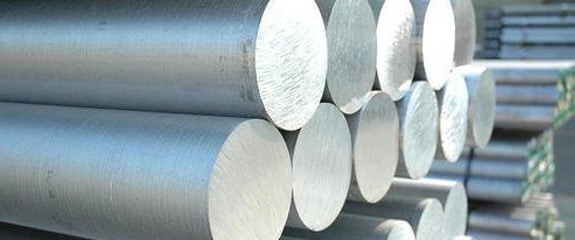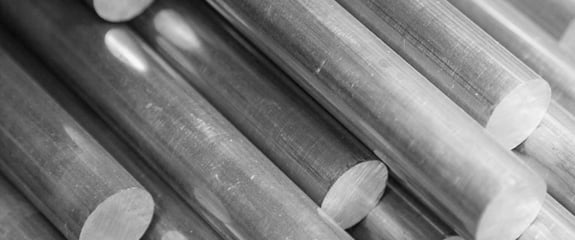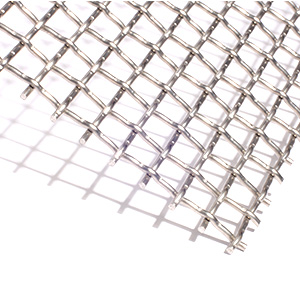Aluminum vs Nickel: Selecting the Best Wire Mesh Alloy
Designing woven wire mesh, while daunting, allows engineers across countless industries to create custom wire mesh solutions that perform. From the weave pattern to the width of the individual wires, woven wire mesh grants you complete control of how successful your filtration/screening process is.
Now, in order to ensure your mesh can withstand the environment of your operation, you must identify an alloy that works. Stainless steel is the standard alloy used, but it doesn't always make sense.
If this is the case, you are left with the task of exploring specialty alloys, such as aluminum and nickel.
W.S. Tyler has been weaving wire mesh into dozens of industries for over 150 years. Our main objective is simple; helping you remove any doubts you have in woven wire mesh so you can deliver quality products constantly.
And it's for this reason that we wrote the following article highlighting the main differences between aluminum and nickel, helping you determine which alloy is suitable for you.
You will learn:
- How aluminum is defined in the wire mesh industry
- The benefits of using aluminum wire mesh
- How nickel is defined in the wire mesh industry
- The benefits of using nickel
- Which alloy makes sense for you
What Is Aluminum Alloy?

Aluminum is a wire mesh alloy that is widely known as it is a natural element reflected in the periodic table of elements. That said, aluminum in a pure form is not commonly seen as it is known to bind with other elements.
Now, in regards to the wire mesh industry, three aluminum variants stand as the prominent choices. These variants are 1100 aluminum (pure), alciad 5056, and 5056 aluminum.
What Is Aluminum Used For?
Aluminum is often the preferred choice when weight is a concern. This is because it is vastly lighter than stainless steel, which is the standard alloy used to weave wire mesh.
This, in turn, helps reduce the amount of stress on your equipment, subsequently reducing the amount of energy used.
Another critical reason aluminum is used to weave wire mesh is its ability to form a protective oxide layer when the surface comes into contact with oxygen. As a result, aluminum wire mesh can combat some of the more troublesome forms of corrosion.
Referring back to standard stainless steel wire mesh, aluminum is known to provide a desirable level of heat conductivity. But at the same time, aluminum can serve as a great electrical conductor.
Aluminum is also considered by those seeking to form custom wire mesh components. This is because being highly malleable is one of aluminum's greatest characteristics.
What Is Nickel Alloy?

Just like aluminum, nickel is a naturally occurring element that is featured on the periodic table of elements. It is considered a specialty alloy as it is typically reserved for applications that have strict criteria regarding what materials are used.
When designing a woven wire mesh solution, you can choose one of two nickel variants. These variants are nickel 200 and monel (1) alloy 400.
What Is Nickel Used For?
Nickel is used when a high resistance to corrosive elements is needed. It is used for special applications, specifically when industrial acids and lyes are present.
This includes a variety of organic compounds, caustic alkalines, and halogenides.
Nickel shares similar characteristics as aluminum in the fact that it is known to bring desirable heat and electrical conductivity. A stand-out feature, however, is its ability to conduct magnetic energy.
Which Wire Mesh Alloy Should I Use?
First and foremost, aluminum is a much softer alloy than nickel. That means that nickel is going to provide better durability.
But to that end, aluminum's soft qualities allow it to be formed easier than nickel alloy. Additionally, aluminum should be used over nickel when the weight of your screen/filter media is a concern.
In terms of heat conductivity, it should be known that nickel can withstand greater temperatures. In fact, the melting point of nickel is approximately 1450°C, while aluminum has a melting point of 660°C.
You Have the Durability; Now Achieve the Best Possible Flow Rate
Aluminum and nickel are two wire mesh alloys that can potentially be excellent alternatives when standard stainless steel mesh is not the best option.
Aluminum is an alloy specifically known for its lightweight profile and superior pliability. Nickel, on the other hand, is known for delivering superior corrosion resistance.
Once you settle on the best possible alloy that will bring peak performance to your process, it is time to figure out what weave pattern you will implement. Having a suitable weave pattern will better your ability to control the particle size range you can screen as well as how well other materials and substances flow through your system.
With over 150 years of experience helping engineers understand that woven wire mesh is much more than interlocked metallic wires, W.S. Tyler is here to help you leverage the capabilities of woven wire mesh and bring true value to your operation.
Read the following article and gain insight into the weave patterns available to you:
About Ronnie Brown
Ronnie is the Content Writer for W.S. Tyler and has four years of experience as a professional writer. He strives to expand his knowledge on all things particle analysis and woven wire mesh to leverage his exceptional writing and graphic design skills, creating a one-of-a-kind experience for customers.




